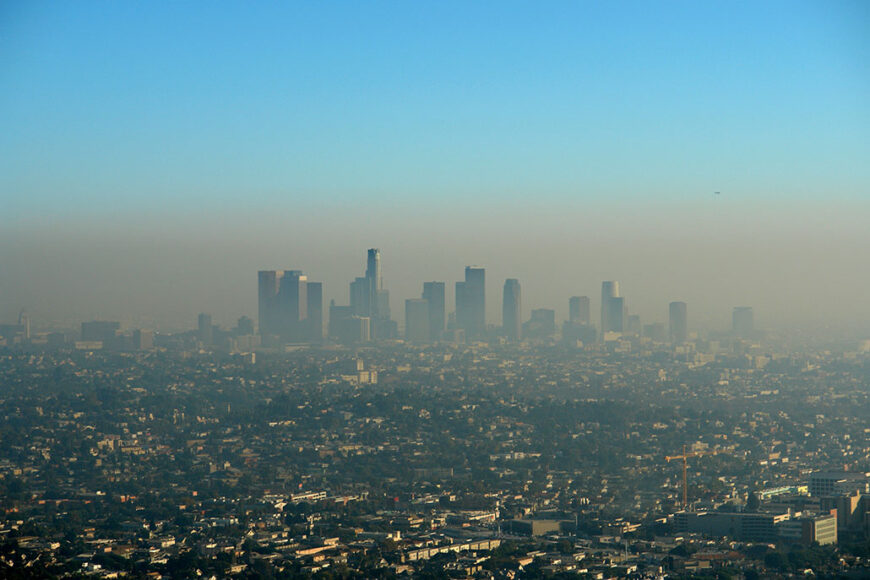aerosol: (adj. aerosolized) A tiny solid or liquid particle suspended in air or as a gas. Aerosols can be natural, such as fog or gas from volcanic eruptions, or artificial, such as smoke from burning fossil fuels.
atmosphere: The envelope of gases surrounding Earth or another planet.
average: (in science) A term for the arithmetic mean, which is the sum of a group of numbers that is then divided by the size of the group.
climate: The weather conditions that typically exist in one area, in general, or over a long period.
combustion: (adj. combustible ) The process of burning.
computer model: A program that runs on a computer that creates a model, or simulation, of a real-world feature, phenomenon or event.
COVID-19: A name given to the disease that caused a massive global outbreak. It first emerged in December 2019 and is caused by a new coronavirus known as SARS-CoV-2. Symptoms can include pneumonia, trouble breathing, feeling too tired to walk more than a few steps, fever, headaches, low blood-oxygen levels, blood clots and brain “fog.”
crystal: (adj. crystalline) A solid consisting of a symmetrical, ordered, three-dimensional arrangement of atoms or molecules. It’s the organized structure taken by most minerals. Apatite, for example, forms six-sided crystals. The mineral crystals that make up rock are usually too small to be seen with the unaided eye.
eruption: (in geoscience) The sudden bursting or spraying of hot material from deep inside a planet or moon and out through its surface. Volcanic eruptions on Earth usually send hot lava, hot gases or ash into the air and across surrounding land. In colder parts of the solar system, eruptions often involve liquid water spraying out through cracks in an icy crust. This happens on Enceladus, a moon of Saturn that is covered in ice.
evaporate: To turn from liquid into vapor.
greenhouse gases: Gases that contribute to the greenhouse effect by absorbing heat. Carbon dioxide and methane are two examples of such gases.
NASA: Short for the National Aeronautics and Space Administration. Created in 1958, this U.S. agency has become a leader in space research and in stimulating public interest in space exploration. It was through NASA that the United States sent people into orbit and ultimately to the moon. It also has sent research craft to study planets and other celestial objects in our solar system.
pandemic: An epidemic that affects a large proportion of the population across a country or the world.
particle: A minute amount of something.
sea: An ocean (or region that is part of an ocean). Unlike lakes and streams, seawater — or ocean water — is salty.
simulate: (in computing) To try and imitate the conditions, functions or appearance of something. Computer programs that do this are referred to as simulations.
solar energy: The energy in sunlight that can be captured as heat or converted into heat or electrical energy. Some people refer to wind power as a form of solar energy. The reason: Winds are driven by the variations in temperatures and the density of the air, both of which are affected by the solar heating of the air, ground and surface waters.
soot: Also known as black carbon, it's the sometimes oily residues of incompletely burned materials, from plastics, leaves and wood to coal, oil and other fossil fuels. Soot particles can be quite small — nanometers in diameter. If inhaled, they can end up deep within the lung.
weather: Conditions in the atmosphere at a localized place and a particular time. It is usually described in terms of particular features, such as air pressure, humidity, moisture, any precipitation (rain, snow or ice), temperature and wind speed. Weather constitutes the actual conditions that occur at any time and place. It’s different from climate, which is a description of the conditions that tend to occur in some general region during a particular month or season.








